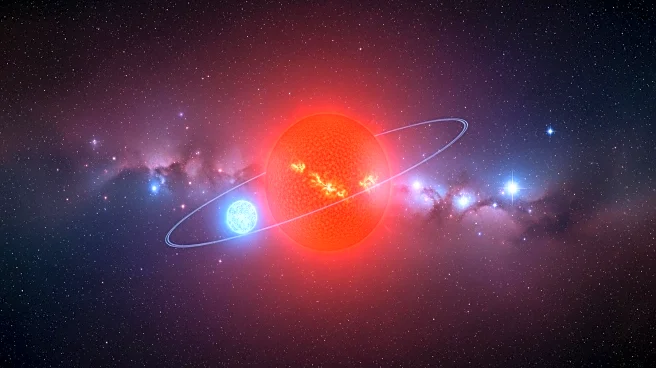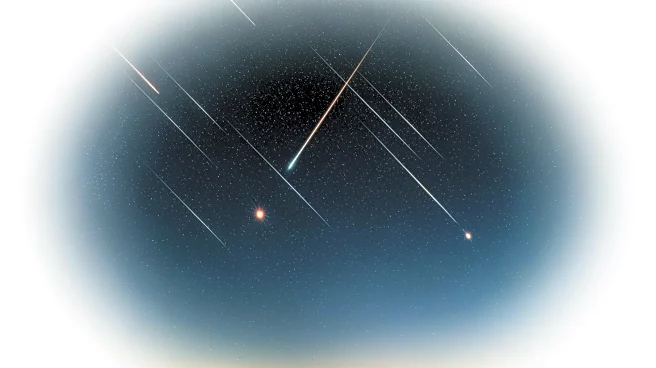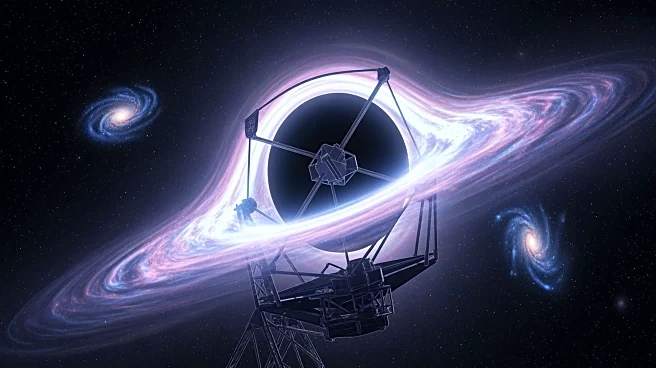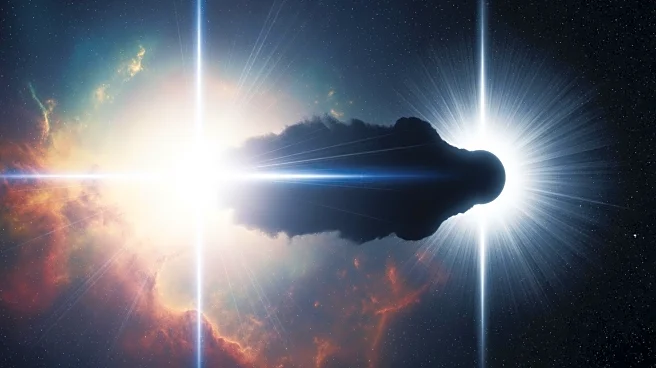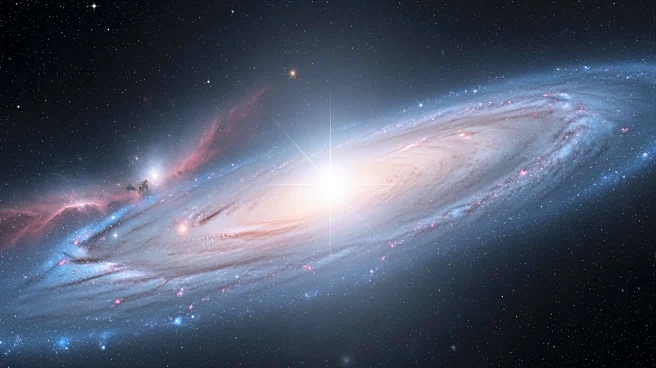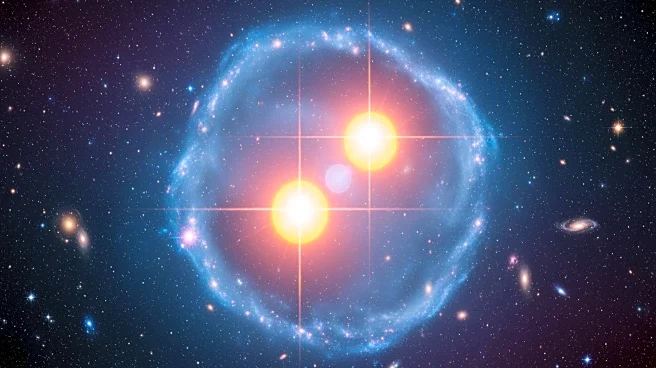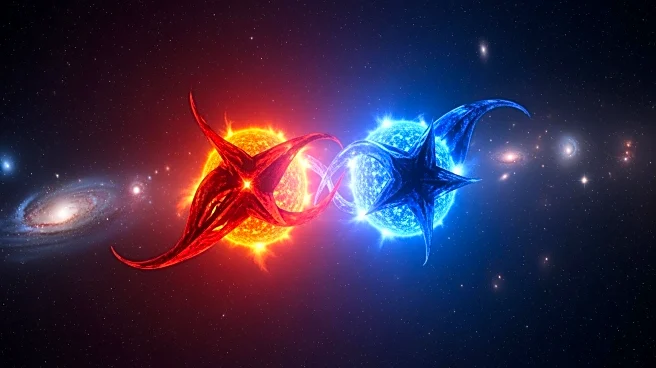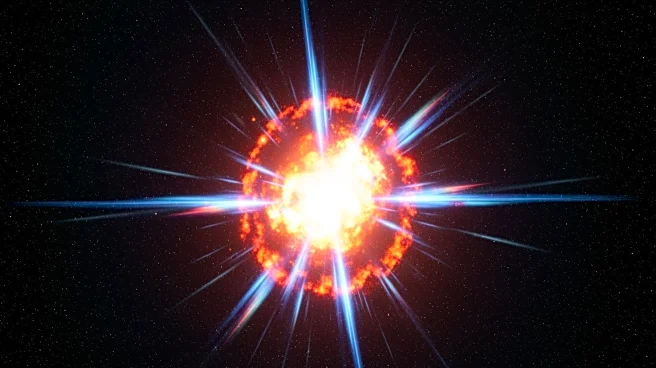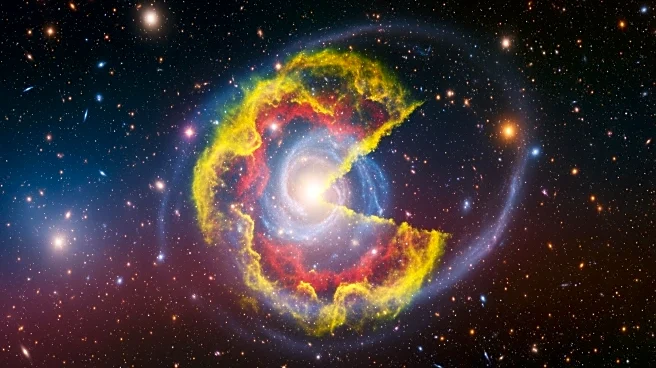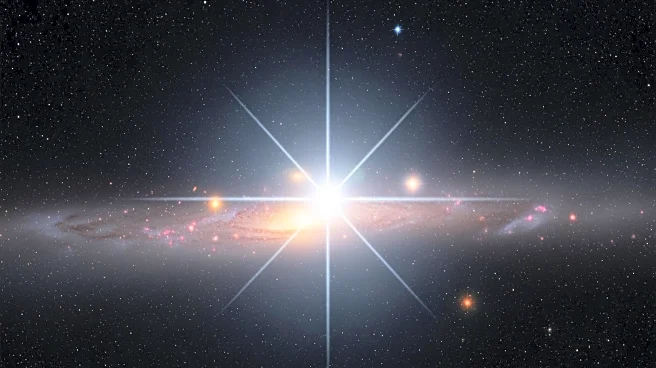What's Happening?
Astronomers have discovered that Betelgeuse, a well-known red supergiant star, has a companion star that is not what they initially expected. Instead of a white dwarf or neutron star, the companion appears to be a young, Sun-like star. This discovery
was made using X-ray images from the Chandra X-ray Observatory, which did not detect the expected X-radiation that would be emitted if the companion were a white dwarf or neutron star. The companion, officially designated α Ori B and nicknamed Siwarha, is thought to be an F-type star still settling into the main sequence. This finding challenges previous assumptions about the evolutionary history of the Betelgeuse system.
Why It's Important?
The discovery of a young, Sun-like star as Betelgeuse's companion opens up new possibilities for understanding extreme mass ratio binaries, a field that has not been extensively explored due to the difficulty in identifying such systems. This finding could lead to a reevaluation of the models used to predict the formation and evolution of binary star systems. The presence of a young star alongside Betelgeuse, which is nearing the end of its life, suggests that these stars formed together about 10 million years ago, providing insights into stellar evolution and the dynamics of binary systems.
What's Next?
Further observations and studies are likely to be conducted to understand the implications of this discovery on the models of binary star systems. Researchers may focus on the dynamics between Betelgeuse and its companion, Siwarha, to explore how their interactions affect each other's evolution. This could lead to new theories about the life cycles of stars in binary systems, particularly those with extreme mass ratios.
Beyond the Headlines
The discovery of Siwarha as Betelgeuse's companion challenges existing theories about binary star formation, particularly the expectation that stars born together should have similar masses. This finding could prompt a reexamination of the processes that lead to the formation of binary systems with significant mass differences, potentially influencing our understanding of stellar evolution and the lifecycle of massive stars.
